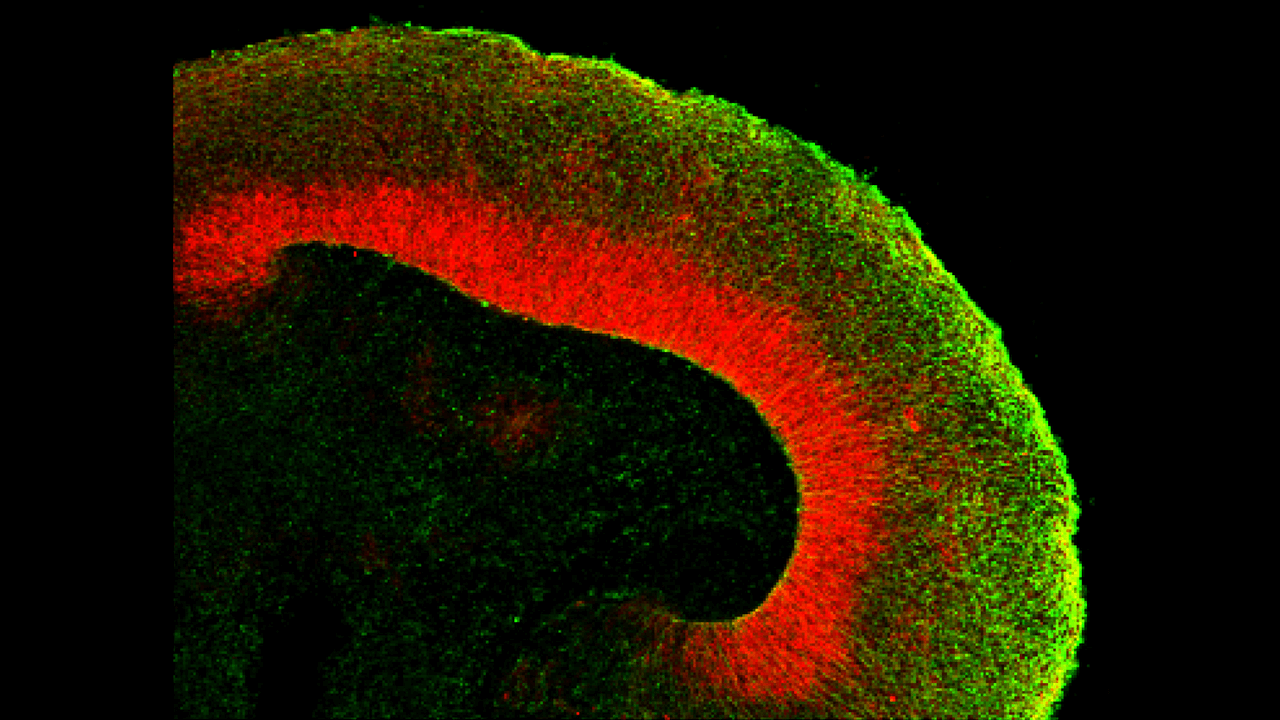Neural Induction and Differentiation of ESCs and iPSCs
Human pluripotent stem cells (hPSCs), including human embryonic stem (ES) cells and induced pluripotent stem (iPS) cells, are self-renewing cells that have the potential to develop into cells of all three germ layers, including the ectoderm. The ectoderm gives rise to the neural tube which includes all cells of the central nervous system including the brain. Since human brain tissue is hard to come by ES and iPS cells hold tremendous potential as a more representative model for studying human neurological development and disease. Being able to generate patient-specific differentiated cells bridges the gap between studies using animal models and clinical research.
We've created these resources to support your hPSC-derived neurological development and disease research, and to give you a window into the exciting research being done by others in the field.
Brains in a Dish: Using Cerebral Organoids to Study Human Brain Development and Disease
What are ãmini-brainsã, and how are they being used to study neurological development and disease? Dr. Oliver Wû¥seke, who works with cerebral organoids as a PostDoc in the Knoblich Lab at IMBA Vienna, gives an overview of the cerebral organoid field and discusses different techniques and results emerging as researchers increasingly adopt cerebral organoid technology to study brain development and disease.
View Now >-
 Cell-Reprogramming Technology and NeuroscienceDetails on human iPSC-derived models of neuropsychiatric and neurodegenerative disorders
Cell-Reprogramming Technology and NeuroscienceDetails on human iPSC-derived models of neuropsychiatric and neurodegenerative disorders -
 Neural Stem CellsOverview of the types of NSCs and their potential use as therapeutic agents for disease
Neural Stem CellsOverview of the types of NSCs and their potential use as therapeutic agents for disease -
 Building Three-Dimensional Human Brain OrganoidsOverview of brain organogenesis and the applications of brain organoids in studying the development and maturation of the nervous system
Building Three-Dimensional Human Brain OrganoidsOverview of brain organogenesis and the applications of brain organoids in studying the development and maturation of the nervous system -
 How to Co-Culture Human Pluripotent Stem Cell (hPSC)-Derived Forebrain Neurons and AstrocytesUse this optimized protocol to combine these cell types in 2D after generating each of them separate
How to Co-Culture Human Pluripotent Stem Cell (hPSC)-Derived Forebrain Neurons and AstrocytesUse this optimized protocol to combine these cell types in 2D after generating each of them separate -
 How to Choose the Right Neural Cell Culture Model for Your Research QuestionIn this Innovation Showcase talk from ISSCR 2022, our Associate Director of Neural Biology, Dr. Erin Knock, discusses the applications of in vitro model systems and demonstrates how ¤Öêü°å¿üãs tools can help overcome barriers to neural stem cell research.
How to Choose the Right Neural Cell Culture Model for Your Research QuestionIn this Innovation Showcase talk from ISSCR 2022, our Associate Director of Neural Biology, Dr. Erin Knock, discusses the applications of in vitro model systems and demonstrates how ¤Öêü°å¿üãs tools can help overcome barriers to neural stem cell research. -
 iPSCs As Models, Part 2: Modeling the Human Brain with OrganoidsGet a walkthrough of how to generate and characterize iPSC-derived brain organoids from Dr. Anjana Nityanandam, Director of the Human Stem Cell Lab core facility at St. Jude Childrenãs Research Hospital. Learn how to improve reliability and reproducibility of data from brain organoid models, and get an overview of disease modeling case studies using various 3D cultures.
iPSCs As Models, Part 2: Modeling the Human Brain with OrganoidsGet a walkthrough of how to generate and characterize iPSC-derived brain organoids from Dr. Anjana Nityanandam, Director of the Human Stem Cell Lab core facility at St. Jude Childrenãs Research Hospital. Learn how to improve reliability and reproducibility of data from brain organoid models, and get an overview of disease modeling case studies using various 3D cultures.







